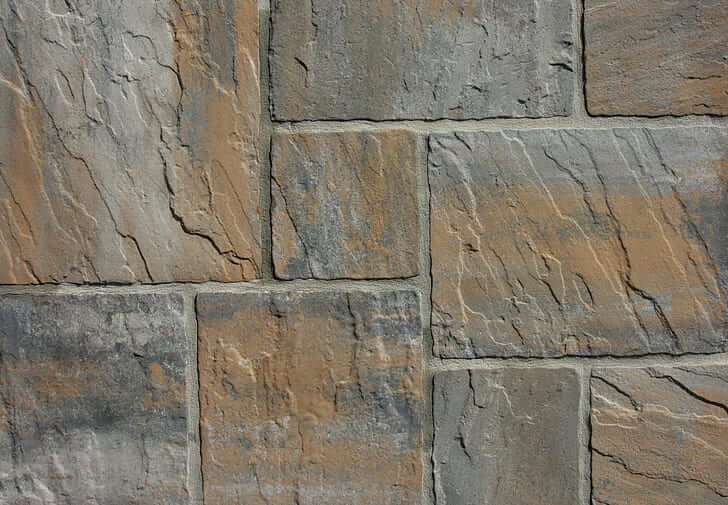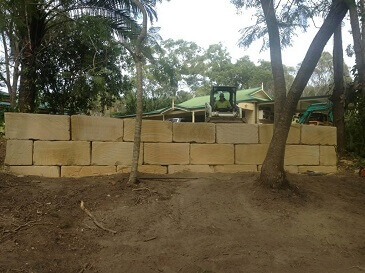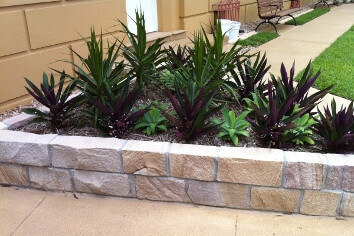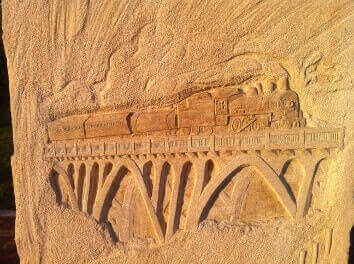When it comes to elevating the aesthetic appeal of modern architectural designs, the choice of materials plays a pivotal role. With its timeless elegance and versatility, sandstone cladding emerges as a standout option, adding a touch of sophistication to contemporary structures. In this blog, we delve into the creative applications of sandstone cladding, exploring how it seamlessly integrates into modern architectural designs.
Aesthetic Harmony with Nature
Sandstone effortlessly harmonises with the surrounding environment with its natural colours and textures. Incorporating sandstone cladding in architectural designs brings a touch of nature to modern structures, creating a seamless blend between the built and natural environments.

Modern Elegance, Timeless Appeal
Sandstone cladding introduces an element of modern elegance while maintaining a timeless appeal. Its versatility allows architects to experiment with various finishes, from sleek and polished to rugged and textured, catering to diverse design preferences.
Sustainable Chic
In an era of sustainable architecture, sandstone is an eco-friendly choice. Sourced responsibly, sandstone cladding enhances the visual allure and aligns with green building practices, contributing to sustainable and energy-efficient designs.
Versatility Unleashed
Sandstone cladding offers architects a versatile canvas to unleash their creativity. Whether used for exterior facades, interior accent walls, or unique design elements, the adaptability of sandstone cladding knows no bounds, allowing for imaginative and unique applications.
Durability Beyond Trends
Modern designs call for materials that withstand the test of time. Sandstone cladding, known for its durability and resistance to weathering, ensures that the architectural charm endures, making it a sound investment in the longevity of a structure’s visual appeal.
Texture and Dimension
Sandstone cladding introduces a play of textures and dimensions, creating visually interesting surfaces. From bold geometric patterns to subtle layering, architects can use sandstone cladding to add depth and character to otherwise monolithic structures.
Local Elegance, Global Impact
For Australian architectural designs, using locally sourced sandstone adds a touch of local elegance with a global impact. Each sandstone piece tells a geological story, connecting the design to the unique beauty of the Australian landscape.
Frequently Asked Questions
How does sandstone cladding enhance the connection between architecture and nature?
With its natural colours and textures, sandstone cladding effortlessly harmonises with the surrounding environment. It creates a visual continuity, bringing a touch of nature to modern structures.
Can sandstone cladding adapt to different design styles?
Absolutely! Sandstone cladding introduces modern elegance while maintaining a timeless appeal. Its versatility allows architects to experiment with various finishes, catering to diverse design preferences.
How does sandstone cladding contribute to sustainable architecture?
Sourced responsibly, sandstone cladding aligns with green building practices, making it eco-friendly for sustainable and energy-efficient designs.
Where can sandstone cladding be creatively applied in architectural designs?
The versatility of sandstone cladding knows no bounds, allowing for imaginative and unique applications. It can be used for exterior facades, interior accent walls, or as unique design elements.
Is sandstone cladding a durable choice for modern designs?
Absolutely! Sandstone cladding is known for its durability and resistance to weathering, ensuring that the architectural charm endures and stands the test of time.
How can sandstone cladding add depth to architectural designs?
Sandstone cladding introduces a play of textures and dimensions, allowing architects to create visually interesting surfaces. From bold geometric patterns to subtle layering, it adds depth and character to structures.
Why choose locally sourced sandstone for architectural designs?
Using locally sourced sandstone adds a touch of local elegance with a global impact. Each sandstone piece tells a geological story, connecting the design to the unique beauty of the Australian landscape.
In conclusion, sandstone cladding offers many creative possibilities for modern architectural designs. At Brisbane Rock Sales, we understand the transformative potential of sandstone cladding and provide premium-quality options for architects and designers. Elevate your architectural vision with the timeless beauty of sandstone cladding.
Ready to incorporate sandstone cladding into your modern architectural masterpiece? Contact Brisbane Rock Sales at 07 3339 1546 to explore our range of sandstone cladding options and turn your design dreams into reality. Let your architectural vision stand out with the enduring elegance of sandstone.







